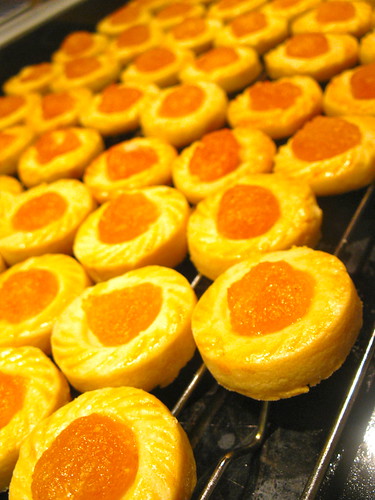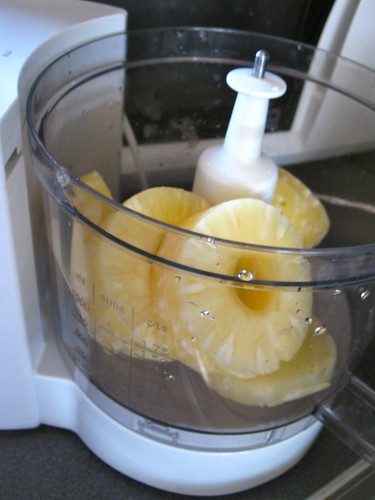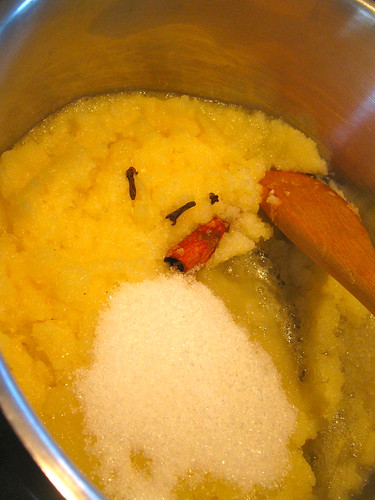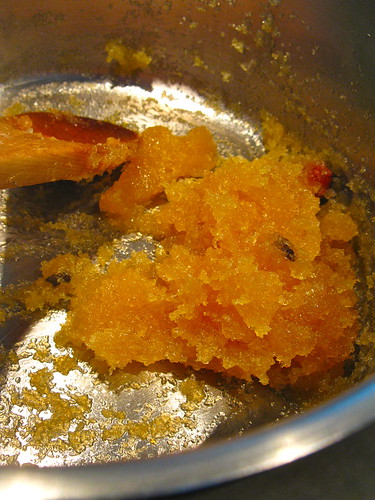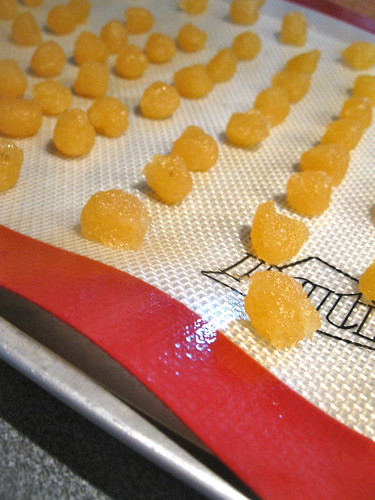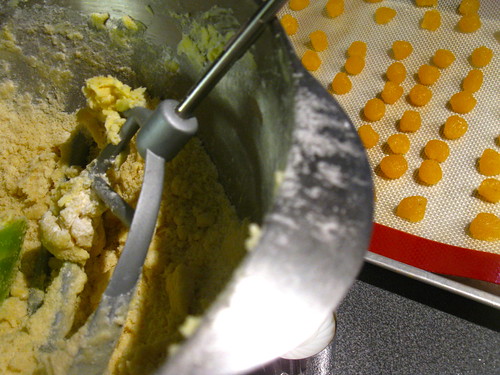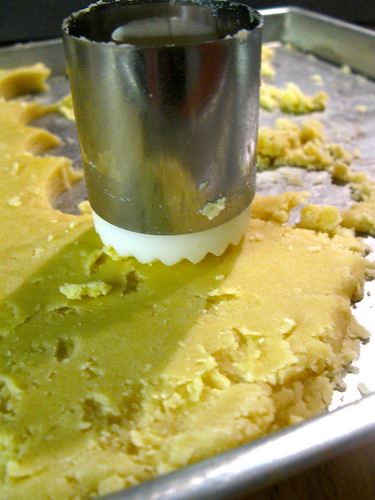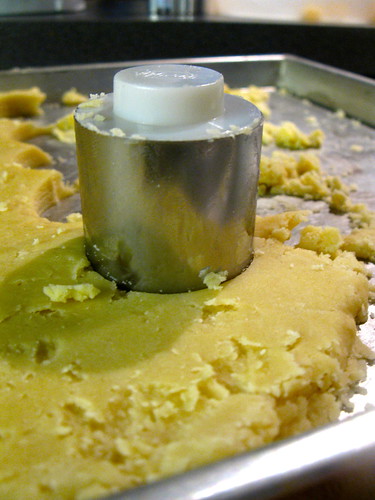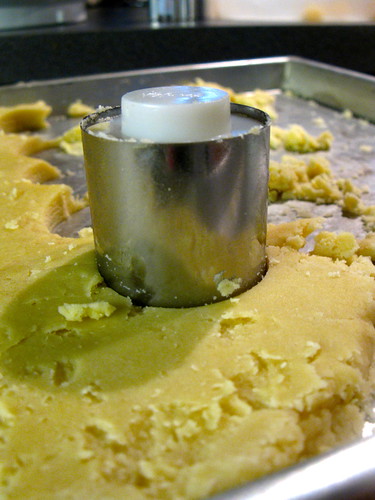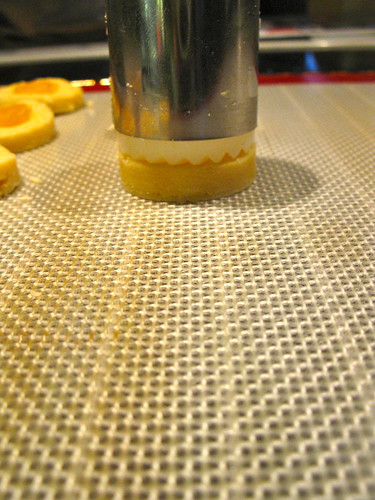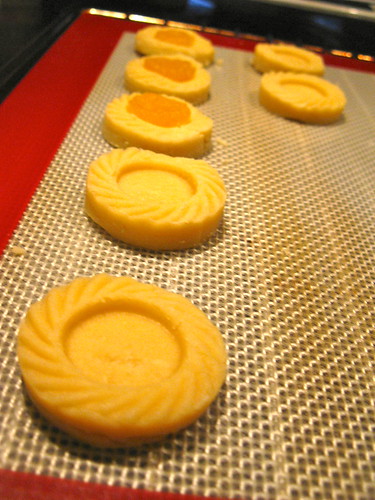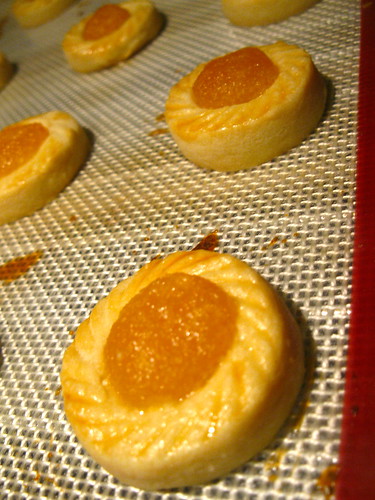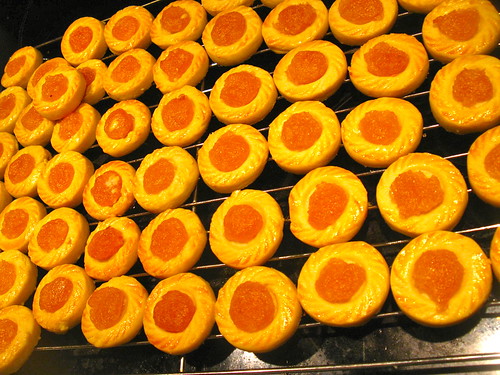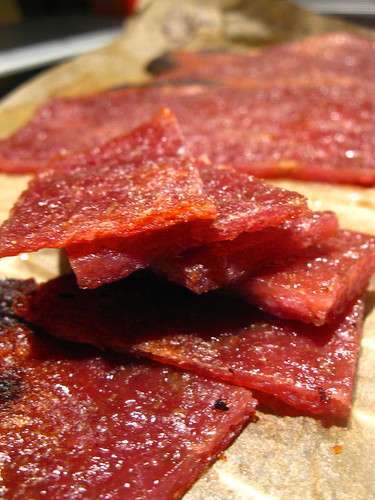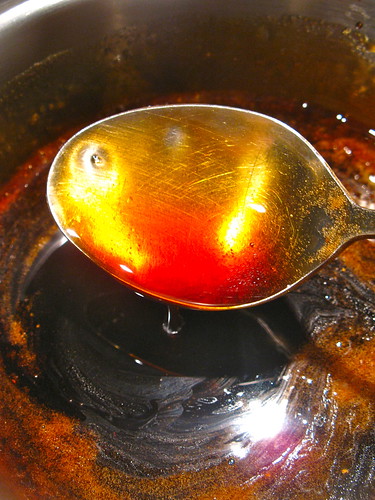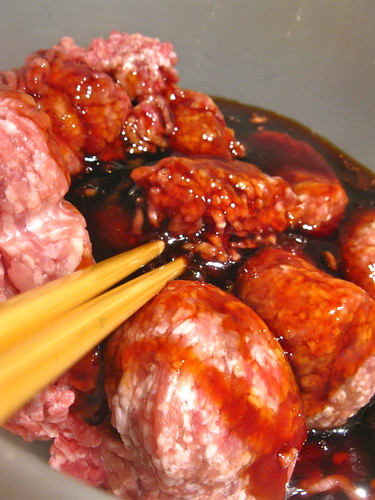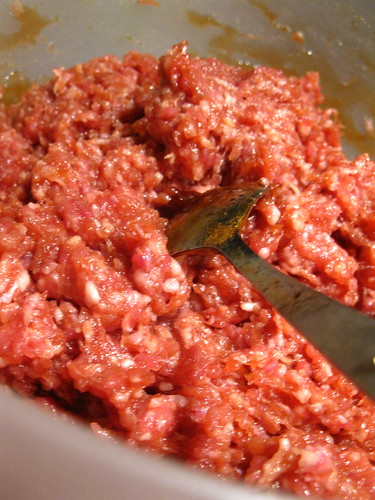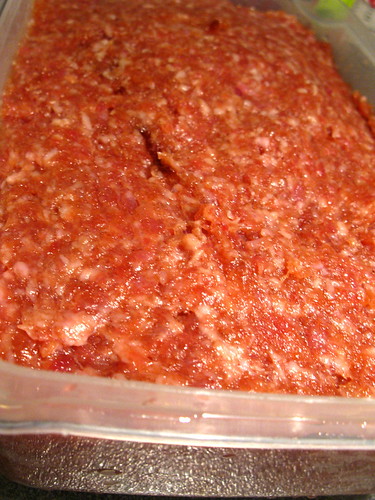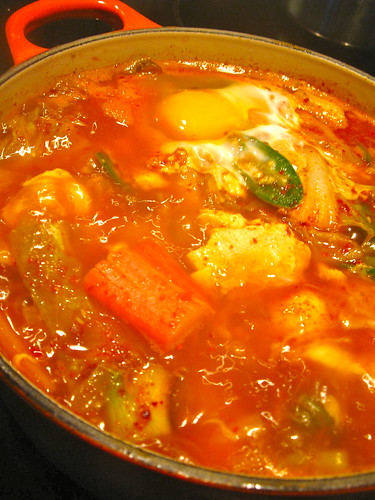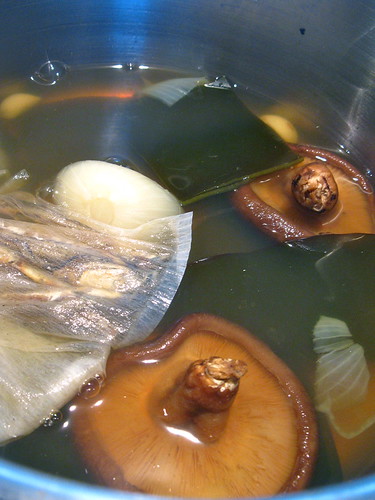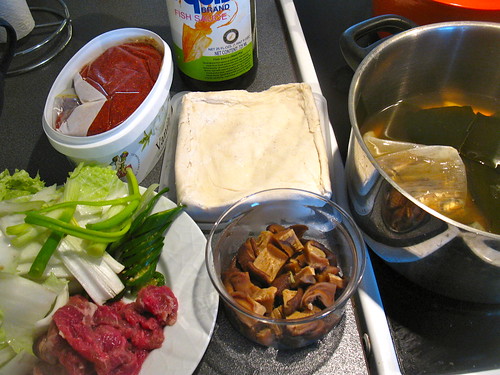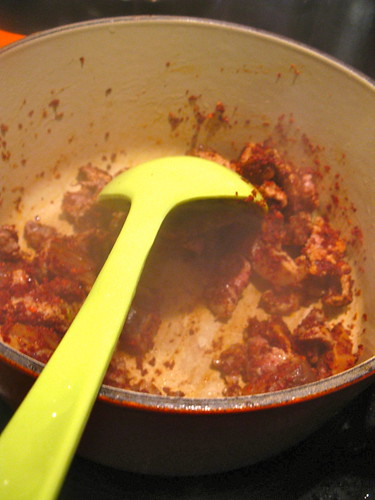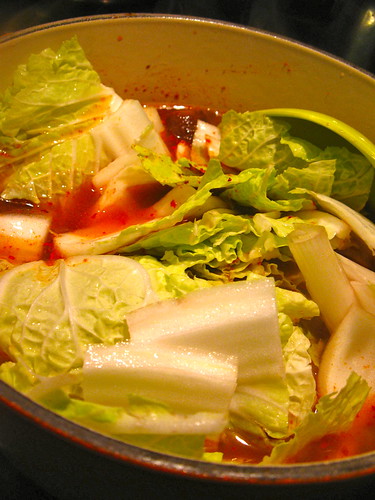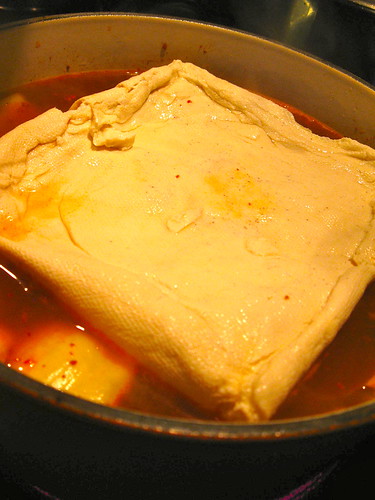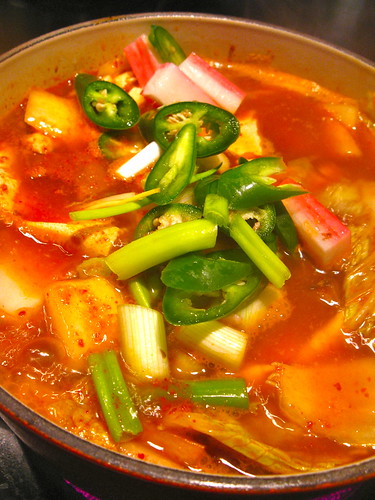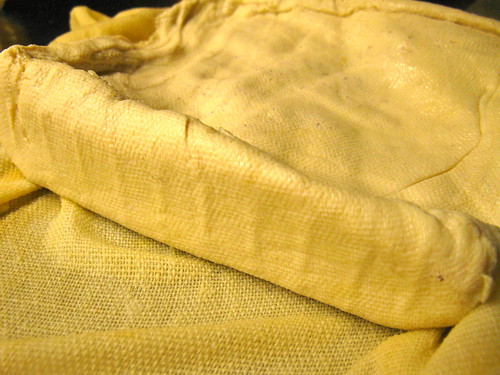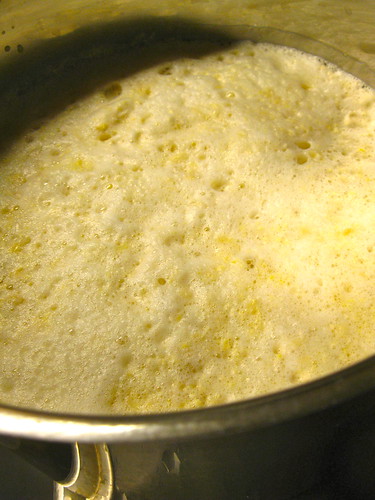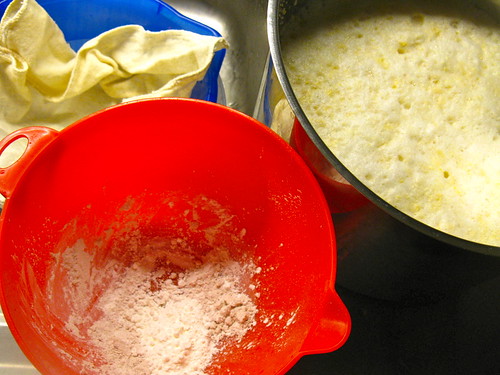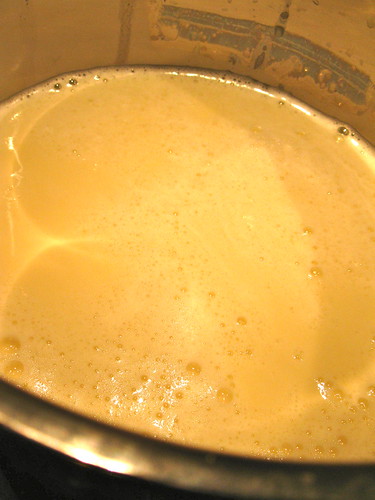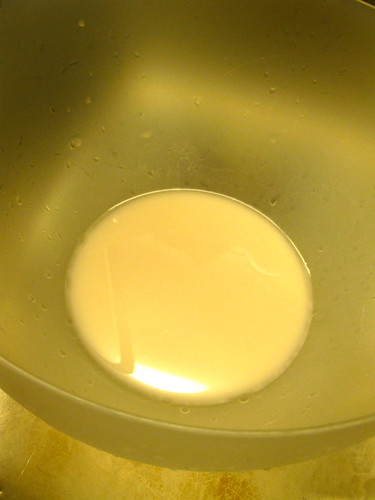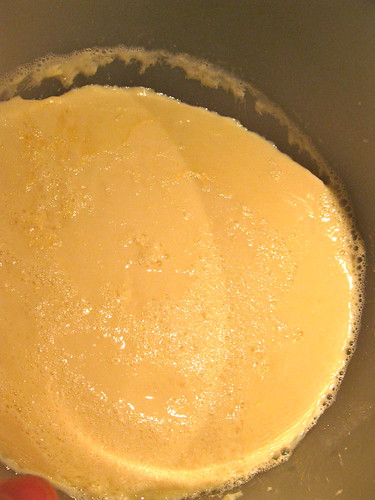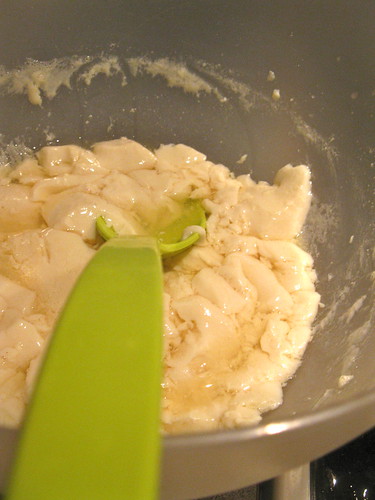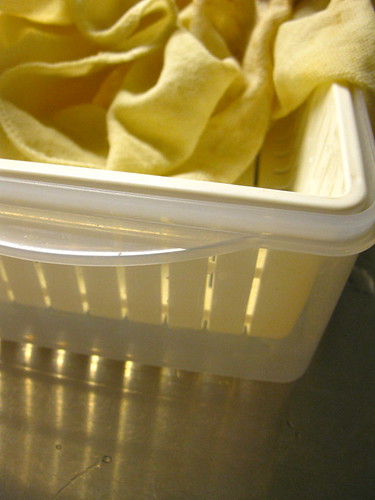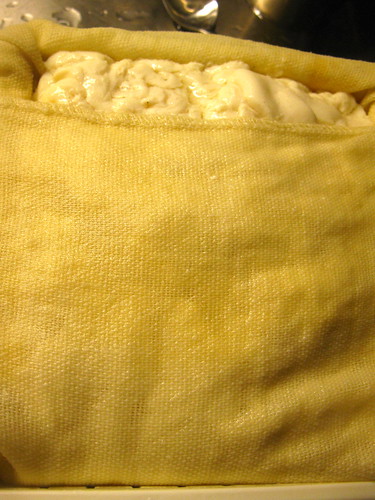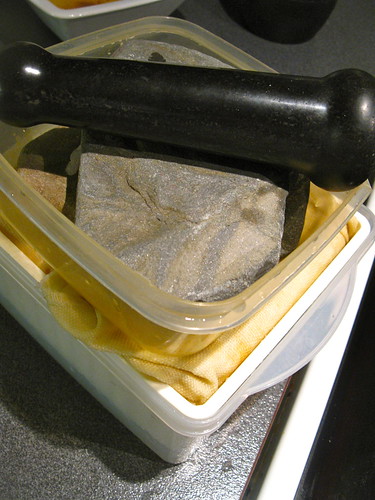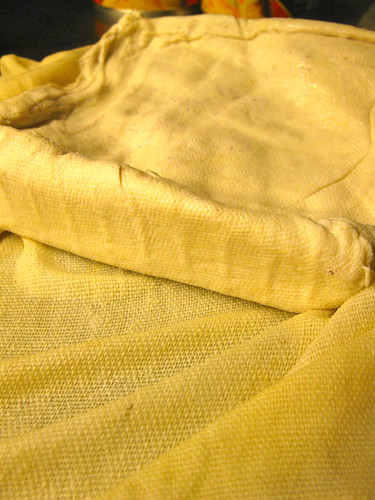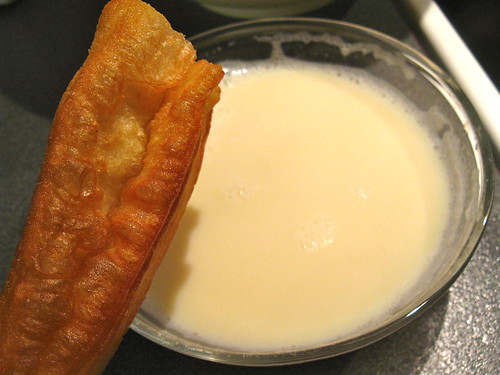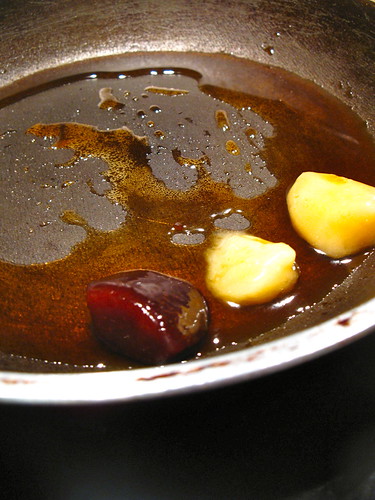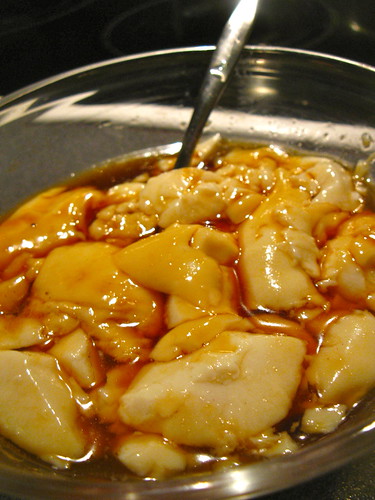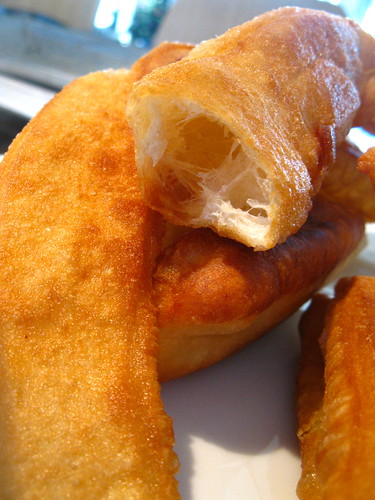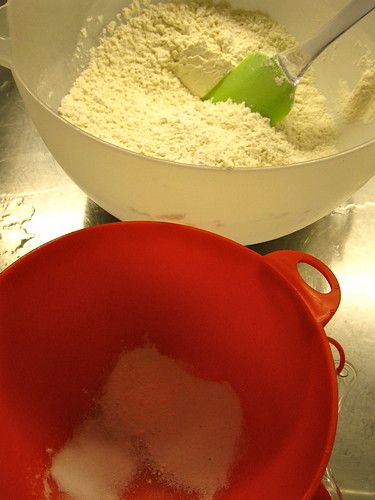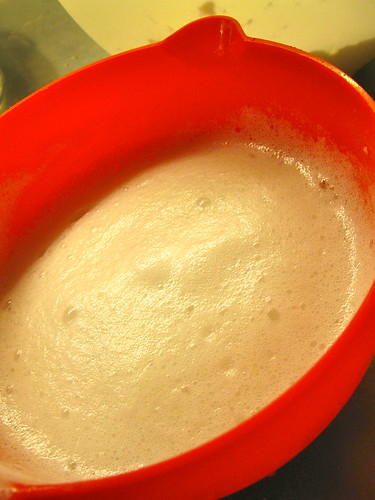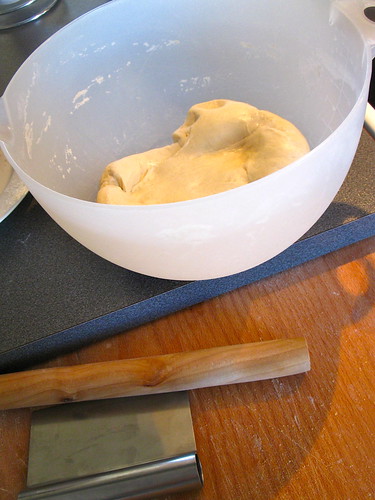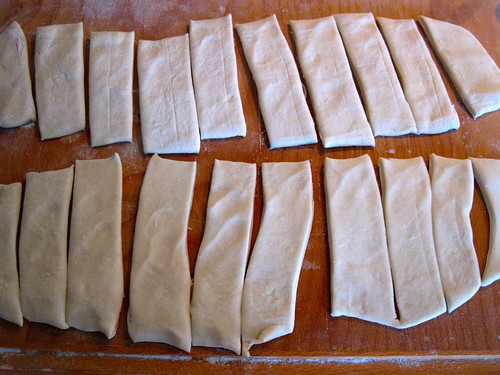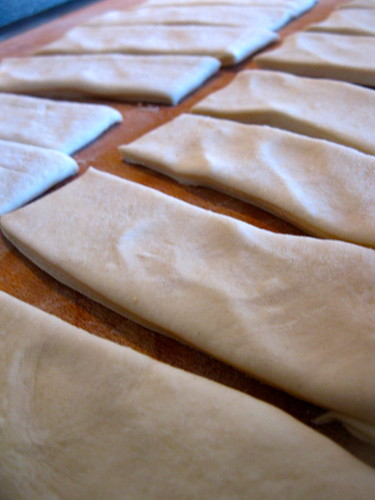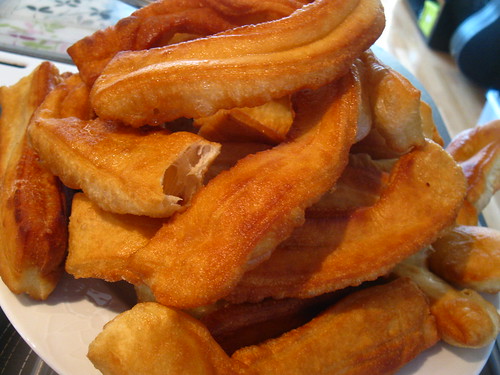Two more days to Chinese New Year and I heard that it's been raining very heavily in Singapore. Here in Sweden, it's just been greyish and cloudy but rain is supposed to signify prosperity for the Chinese and it's also a sign of blessing, so...it will be the perfect weather to stay home and try making this popular cookie!
I adapted the recipe from Fresh from Oven, whose recipe has been used by many fellow bloggers. I like the jam which I added cinnamon sticks and cloves while simmering it down but the pastry - not sure if I'm baked it too long (15 minutes) or its too thick, or because I did it the open style instead of the closed one, is not yet to the soft, melt-in-your-mouth type that I really love. Next time I will try the recipe from here, and keep the jam recipe but double the amount because I like it with generous toppings and this was quite fragrant and not too sweet, despite using canned pineapples.
The best pineapple tarts (and quite expensive) ones I've tasted so far still comes from the bakery at Killiney Road. It was during those days when M1 call center was still situated in town and IOI building was just next to this old looking shop house unit. They also sell it during non-CNY period, so if you miss it this time, don't worry, you can get it it non-peak period without q-ing.
Ingredients
Pineapple Jam/filling
1 can of pineapple rings (mine has about 8-9 rings in one can, but I would double this next time)
1/4 cup sugar
1 cinnamon stick
2-3 cloves
1-2 teaspoon lemon juice
1 teaspoon cornstarch
Pastry (Handle it like a sweet short-crust pastry)
220g unsalted butter, at room temperature
2 egg yolks
2 egg yolks
375g plain flour
1/4 teaspoon salt
50g icing sugar
2 tablespoons cornstarch
1/4 teaspoon salt
50g icing sugar
2 tablespoons cornstarch
egg wash
Steps
- Process the pineapple rings in a food processor until very fine. Remember to drain the pineapple as much as you can first.
- In a pot, add the pineapple, cinnamon, cloves and sugar and stir it over medium high heat for about 30 minutes until it reduces to a sticky, jam-like consistency. Add the lemon juice and cornstarch towards the end part of the whole process and stir well. Let it cool before rolling them into individual portion (measure it against the mould you will be using, I used a small one but they can vary in size) to be used for topping the tarts. I find wetting my hands a little helps in the rolling.
- Prepare the pastry by beating the butter until it is light and fluffy, then add the egg yolks one at a time, making sure it is incorporated well.
- Sieve the dry ingredients gradually and mix it into the egg & butter mix, until the dough resembles large chunks of semi-wet bread crumbs.
- On a metal tray or non-stick surface, use your hands to bring the dough together. This is like a short-crust pastry so it will tend to be a bit flaky but should feel a bit tacky but not sticky to touch.
- Roll out the dough to a large rectangle of your desired thickness (mine was like 1.5 time the thickness of one side of an Oreo cookie).
- Using a pineapple tart mould/cutter (I bought mine from one of those baking supplies shop in Singapore, cost just under SGD$3.00 and try to figure out how to use it), first press down the metal ring to cut the dough;
- Then press down the plastic white mould to make the impression/indentation;
- Place the mould with the dough at the bottom on your baking sheet;
- Push out the dough and carefully remove it from the bottom of the mould. If the dough gets too soft to work with, put it into the fridge for a while before using).
- Take a portion of the pineapple filling you have rolled out previously, flatten it slightly before placing it in the pineapple tart indention, pressing it to fit the indentation if necessary.
- Egg-wash the pineapple tart before baking it in a pre-heated oven at 180°C for about 10-15 minutes. The pineapple tart is done when the bottom of each cookie is baked through.
